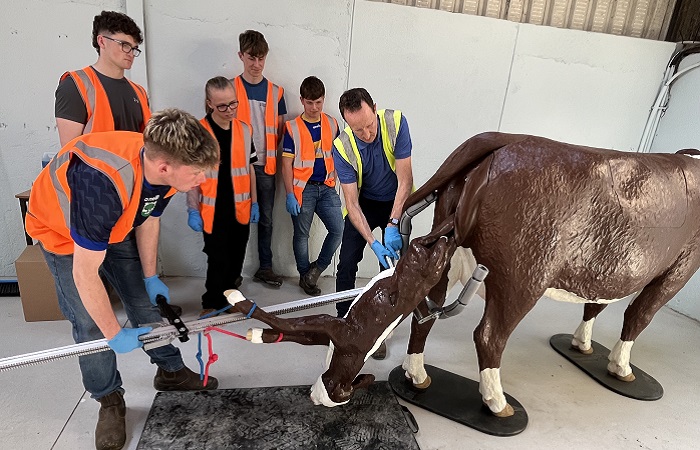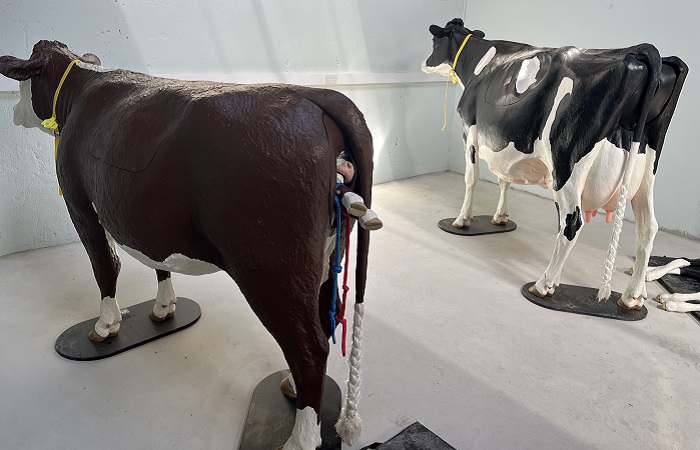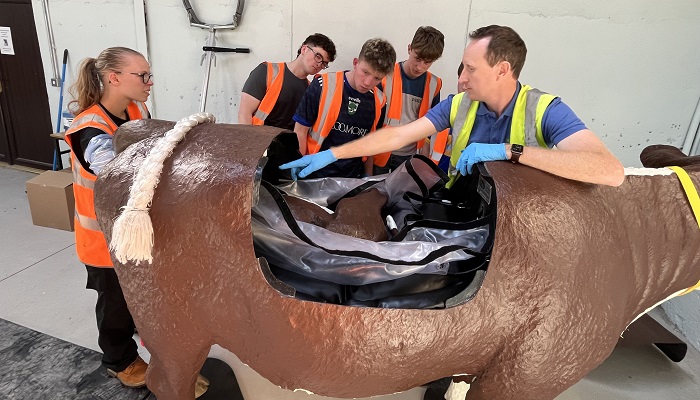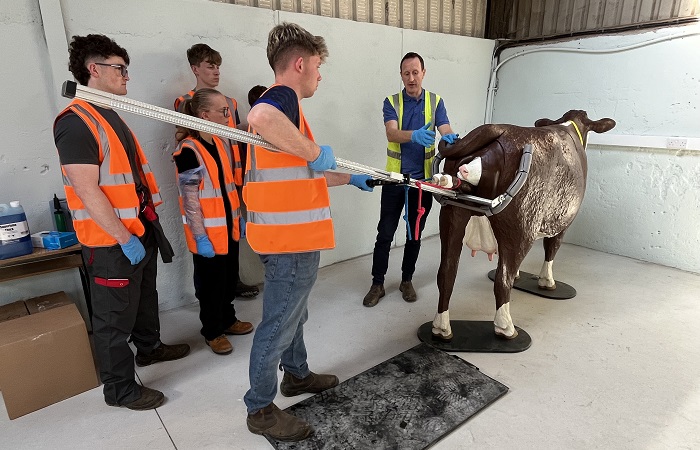16 October 2024
Udderly realistic: How calving simulators are ‘moo-ving’ education forward at Kildalton College

Jamie Cahill, Lecturer in Teagasc Kildalton College, writes on the college’s recently acquired calving simulators – valuable pieces of equipment that allow students to practice the calving procedure in a safe environment.
An element of Agricultural College that students always enjoy and look forward to each day are the practical classes. Typical skills such as milking cows, dosing, disbudding, welding, tractor driving etc. are carried out on a daily basis with students in Kildalton College. However, one skill that proves difficult to allow students hands-on practice with is calving the cow. It may be easy to schedule students for a disbudding practical at 2pm; however, trying to schedule a cow calving for such a precise time is much more difficult!
Hands-on experience
To assist with giving students hands-on experience with calving, Kildalton College has acquired two calving simulators to allow students to practice the calving procedure in a safe environment. This allows them to build confidence and knowledge before going on a host farm placement, where they will practice their skills in a real-life setting.
Funding for the calving simulators was provided by the Department of Agriculture, Food and the Marine and was announced by Minister of State, Martin Heydon T.D., in July 2023. The simulators have now arrived on the college farm and are already proving to be a huge hit with students and staff.
The cow simulators (a Holstein and a Hereford) are full-sized cows, with a working udder, a uterus and each has their own full-size calf. The cow and calf can be set up to demonstrate to students a wide range of scenarios.

Initially, the normal calving presentation can be demonstrated to students so that they can see why this presentation is ideal for the cow to be able to calve unassisted. The simulators can then be set up to exhibit abnormal presentations, such as a calf coming with a leg or a head turned back, a calf coming backwards, or a breech birth (a backwards calf with its back legs facing forward towards the cow’s head).
Students can practice correcting difficult presentations and attempting delivery in a safe manner or recognising when there is a need to call the vet. The calf model weighs approximately 25kg so students can learn to understand the techniques involved in delivering a calf and experience using these techniques under the strain and weight of a realistic model. Pressure can be increased or decreased around the cow’s pelvis to make for a more challenging or less challenging delivery for the student.

Jamie Cahill discussing calf presentation with a group of students at Kildalton College
The correct use of a calving jack can be difficult to demonstrate in normal situations. Getting the opportunity to safely demonstrate its use on a cow in labour, with a group of students, while also allowing students to take turns using it, would not be possible in a large college setting. The health and welfare of the animal, the safety of the students and the overall ethical considerations of such a scenario make this an impossible event. However, these calving simulators now make the impossible possible. Students can practice the correct setting up of calving ropes, practice the correct techniques of using the calving jack and finally, tend to the freshly-born calf after delivery. Students can go on to check the cow for milk in her four teats and practice milking her by hand in the event of needing to bottle feed, or stomach tube, colostrum to the calf.

The correct use of a calving jack can be demonstrated using the calving simulators
Developing the basic skills
It is extremely important to realise that becoming proficient at calving on a simulator does not automatically transfer to being fully proficient at calving in a real-life situation. Nonetheless, while using these simulators, the student will be developing the basic skills of how to handle the cow, experiencing what a normal or abnormal presentation should feel like and this makes the experience a lot less daunting for inexperienced students. Experienced learners have the opportunity to improve their skills further, expand their knowledge of the labour process and improve the overall health and welfare for animals on their farm at calving time.
To find out more on Kildalton College, click here.
